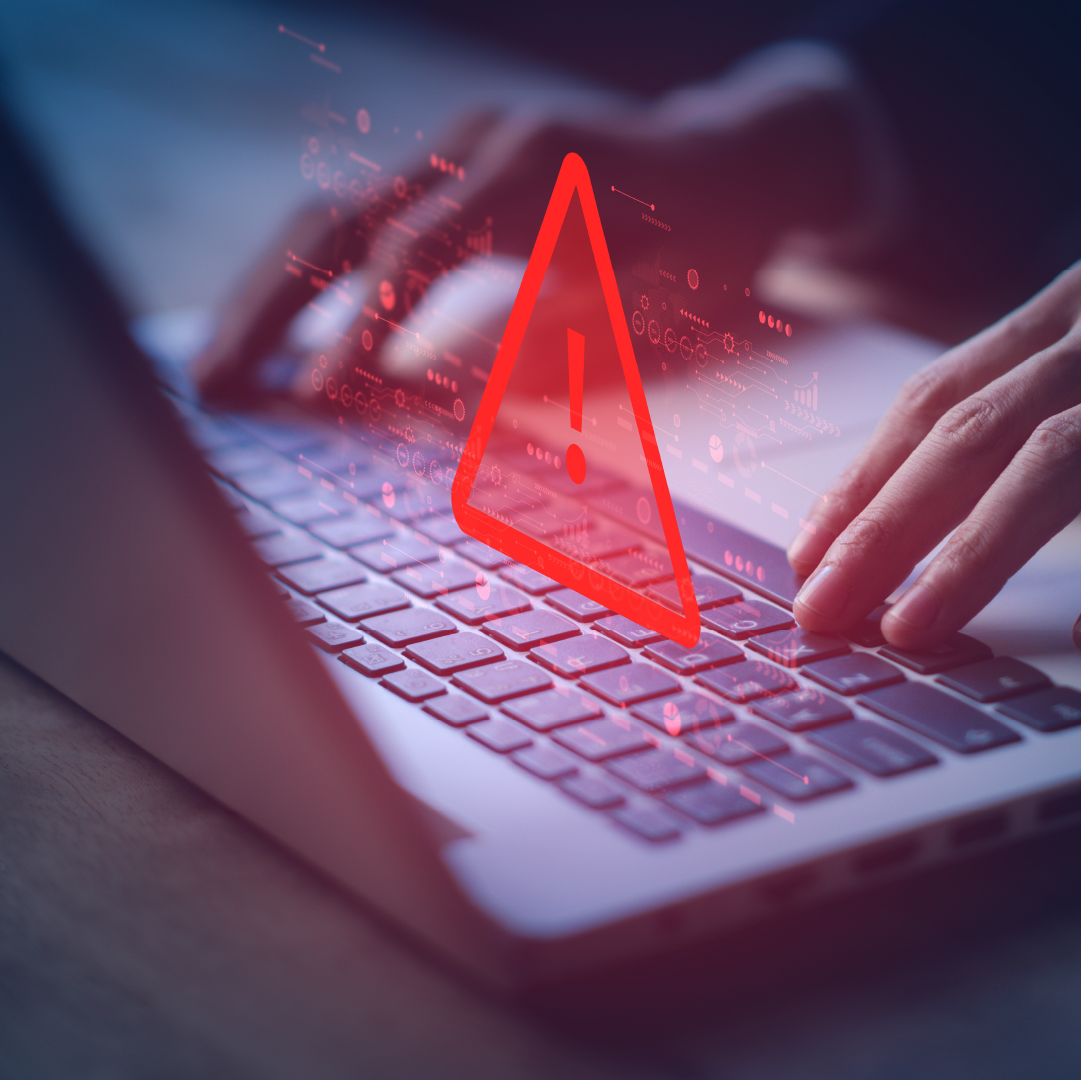Phishing Scams: How to Identify and Avoid Them
2024-09-15 17:02:52

The threat of phishing scams in South Africa is greater than ever.
Did you know that the average cost of a cybersecurity breach in South Africa has reached R49 million, an 8% increase from 2022? That's why understanding and avoiding phishing scams is so crucial for protecting your business.
This comprehensive guide will equip you with the essential knowledge to identify and prevent phishing attacks effectively.
Read on to discover how to protect your business from these major threats.
Understanding Phishing Scams
What is Phishing?
Phishing is a fraudulent attempt to acquire sensitive information. Scammers, known as phishers, often disguise themselves as trustworthy entities in their communications.
They typically use phishing emails to deceive people. These emails might appear to come from legitimate companies. However, they are not what they seem.
Scammers design these emails to trick you into providing sensitive information. They may use official-looking logos and email addresses to create a false sense of security. Despite their appearance, these emails are part of a phishing attempt aimed at deceiving you.
Additionally, scammers use text messages that seem to be from trusted sources. These messages often include urgent requests or misleading links.
They may also create counterfeit websites, or phishing sites, that closely resemble real ones. The goal is to trick you into revealing sensitive information, such as credit card numbers.
Phishing scams vary greatly in their methods and appearance.
Some phishing scams use fake emails that mimic messages from legitimate companies. Others might create counterfeit websites. Scammers create these counterfeit websites, also known as phishing sites, to look very real and convincing.
Additionally, scammers may send deceptive text messages. Scammers craft these messages to trick recipients into taking action. Both methods aim to deceive you and compromise your sensitive information.
Examples include:
- Spear Phishing: Targeted attacks aimed at specific individuals or organisations, often leveraging personal information to increase credibility.
- Whale Phishing: A type of spear phishing targeting high-profile individuals, such as executives or high-net-worth individuals.
- General Phishing: Broad attempts to deceive a wide audience, often through generic messages.
The Evolution of Phishing
Phishing scams have dramatically changed over the years. Initially, these attacks relied on simple email hoaxes and mass mailings. Today, they have become much more sophisticated. Modern scams often use advanced technologies and clever social engineering techniques to target sensitive data.
Scammers now incorporate deepfake technology and artificial intelligence to create highly convincing and deceptive communications. This evolution in tactics makes phishing attacks harder to detect and more dangerous than ever.
In fact, Africa experienced the highest average weekly cyberattacks per organisation in Q2 2024, with 2,960 attacks. This marks a concerning 37% increase from the same period in 2023. South Africa alone saw an average of 1,450 weekly attacks per organisation, a 4% year-on-year increase.
Common Phishing Tactics
Email Phishing
Email phishing remains one of the most common types of phishing. These emails often look like they come from trusted sources, such as financial institutions or well-known companies. They design these to trick you into providing sensitive information.
Additionally, phishing emails might include links that lead to malicious phishing sites. By appearing legitimate, these emails can easily deceive recipients into compromising their personal or financial security.
Characteristics of phishing emails include:
- Urgent or Threatening Language: Phrases like “Your account will be suspended” or “Immediate action required” create a sense of urgency and are often used to manipulate recipients.
- Suspicious Attachments or Links: Unexpected attachments or links that lead to non-secure websites.
Examples of email phishing scams include:
- Fake Account Verification: Emails claiming your account needs verification, directing you to a fraudulent website.
- Unsolicited Prize Notifications: Messages informing you of a prize or reward requiring personal information to claim.
Spear Phishing
Spear phishing involves highly targeted attacks, often aimed at specific individuals within an organisation.
Attackers personalise their attempts by using information from social media or other sources. This includes details like email addresses and phone numbers.
By doing this, they make their phishing attempts more convincing and targeted.
Techniques used in spear phishing include:
- Personalised Messages: Emails or messages that reference personal details or specific organisational knowledge.
- Social Engineering: Manipulating individuals into divulging confidential information by exploiting personal relationships.
Smishing and Vishing
- Smishing (SMS Phishing): Smishing involves sending fraudulent text messages. They make these to trick recipients into providing personal information or clicking on malicious links. For example, a text message might look like it’s from a bank asking for account details.
- Vishing (Voice Phishing): Vishing occurs through phone calls or voicemail. Scammers impersonate legitimate entities, such as bank representatives, to extract sensitive information.
Website Phishing
Website phishing involves creating counterfeit websites that closely resemble legitimate ones.
The goal is to trick visitors into entering sensitive information. These fake sites often look nearly identical to the genuine ones, making them difficult to spot as fraudulent.
Indicators of a phishing website include:
- URL Discrepancies: Slight misspellings or unusual domain names.
- Lack of HTTPS: Absence of a secure connection indicator (padlock icon) in the browser.
Recognising Phishing Attempts
Red Flags to Watch For
- Suspicious Links: Be cautious of links in emails or messages. Hover over links to check their destination before clicking. Malicious URLs often contain slight deviations from legitimate ones.
- Unusual Requests: Phishers often use phrases like "Immediate action required" or "Your account will be suspended" to create a sense of urgency.
- Inconsistencies: Look for inconsistencies in communication, such as incorrect grammar, unexpected requests for sensitive data, or discrepancies in contact details.
Verification Techniques
- Cross-Checking: Verify the authenticity of communications by contacting the organisation directly using known contact details, rather than responding to the initial message. This can help you avoid phishing scams.
- Contacting the Organisation: If you receive an email or text message requesting sensitive information, contact the company using official channels to confirm its legitimacy. Avoid using the contact information provided in the suspicious message.
Protecting Your Business from Phishing Attacks
Employee Training
There's a 32.8% chance that employees in South Africa without security training will fall victim to phishing scams.
This stresses the importance of regular training for employees to recognise and respond effectively to phishing attempts. Implement interactive training sessions and simulated phishing exercises to reinforce employees' ability to detect and handle phishing attempts.
Technical Measures
- Email Filtering: Use advanced email filtering solutions to block suspicious messages and reduce phishing risks. Comprehensive email security tools, such as those offered by Daisy Business Solutions, provide robust protection against phishing attacks.
- Multi-Factor Authentication: Enhance security by implementing multi-factor authentication (MFA), which adds an additional layer of verification beyond passwords. MFA can significantly reduce the risk of unauthorised access.
Incident Response
- Response Plan: Develop and implement a response plan for suspected phishing attacks. Immediate isolation of affected systems and notification of IT teams are essential steps.
- Reporting: Report phishing attempts to relevant authorities and within your organisation. For expert guidance and support in handling such incidents, Daisy Business Solutions is here to assist.
The Growing Threat Landscape
Hackers are using more sophisticated methods than ever. Among these, email phishing is the most common attack vector, affecting 61% of cases. Compromised passwords follow, accounting for 48%, with data breaches coming in at 44%.
The South African Banking Risk Information Centre (SABRIC) reports a 22% increase in cyber attacks in 2023. Small companies are especially vulnerable to these attacks. However, larger enterprises remain high-value targets due to the extensive amount of valuable data they handle.
This rapidly progressing concern highlights the critical need for strong security training and advanced technical measures to protect against such threats.
Conclusion
Phishing scams are a grave and escalating danger to your business’s very existence. With the cost of breaches soaring into millions and attacks becoming ever more sophisticated, the urgency to protect your operations cannot be overstated.
Don’t gamble with your business’s security. For unparalleled IT solutions that will fortify your defences and secure your operations, rely on our industry-leading experts.
Choose Daisy Business Solutions' Managed IT Services today.


